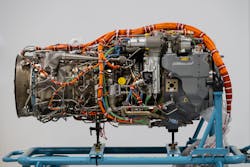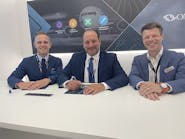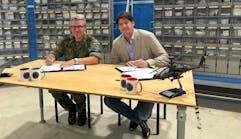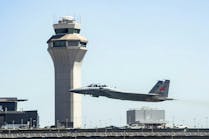U.S. Army Accepts T901-GE-900 Flight Test Engines in Support of Improved Turbine Engine Program
GE Aerospace has announced the acceptance of the first two T901-GE-900 flight test engines to the U.S. Army which will support the Future Attack Reconnaissance Aircraft (FARA) Competitive Prototype program. The next-generation rotorcraft engines – which will power the U.S. Army’s UH-60 Black Hawk, AH-64 Apache and FARA – were officially accepted by the Defense Contract Management Agency at GE’s Lynn, MA facility.
“We are thrilled to announce the acceptance of the revolutionary T901 by the U.S. Army,” says Amy Gowder, president and CEO, Defense & Systems at GE Aerospace. “The performance, power, and reliability of the T901 – combined with GE’s decades of experience powering Army rotorcraft – will ensure our warfighters have a significant advantage on the battlefield.”
The T901 engine was built on GE’s unparalleled experience powering the Black Hawk and Apache for the past four decades with its combat-proven T700 engine, a run that has resulted in more than 100 million flight hours. The T901 was developed in response to a need from the U.S. Army for increased power. The new engine provides 50 percent more power and reduced life cycle costs with fewer parts and a simpler design. The engine’s fuel efficiency will improve the enduring fleet’s range, loiter time and fuel consumption, all while reducing maintenance and sustainment costs.
The T901 design draws from an impressive stack of commercial technologies, including 3D-modeling, the use of ceramic matrix composites (CMCs), and 3D-printed (additive) parts. The use of CMCs and additive manufacturing enables the engine to produce more power with less weight.
Another notable design feature of the T901 is the engine’s modular design, an aspect that was carried over from the legendary T700. The modular design is one key to the T901’s low cost, growth, reliability, maintainability, and reduced life-cycle costs. Through the application of this proven technology, the T901 can easily integrate with the Army’s existing helicopters while exceeding performance requirements.
Beyond the advanced design and hardware, the T901 features the latest diagnostic and prognostic tools with a modular architecture that enables the service with the flexibility to improve readiness at the lowest life cycle costs.



